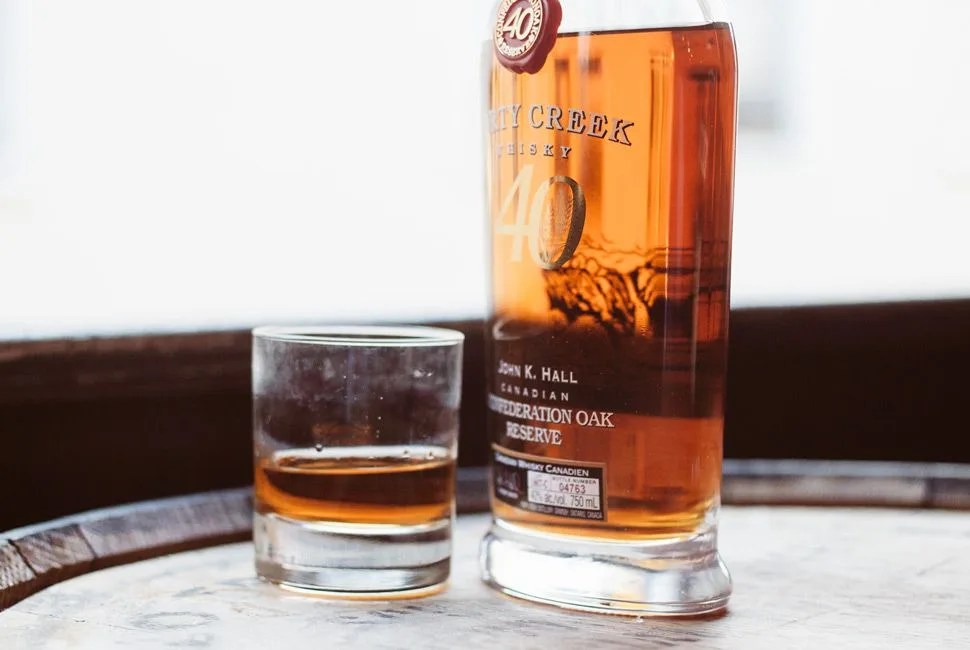John Hall, an accomplished wine maker and distiller, has enough whiskey in front of him on the table to host a frat party. But this is an occasion for sipping, not shots. Hall is talking and tasting through the whiskeys of Forty Creek, a distillery he began in 1992 in Grimsby, Ontario, and that was bought by Gruppo Campari for $185.6 million (Canadian) in March of 2014. He motions to the Barrel Select first, then the Copper Pot and Double Barrel Reserve. Finally, he settles in to speak about the Confederation Oak Reserve — his most prized liquid. He pours a few ounces, then starts in about trees.
“Canada usually grows cherry oak and red oak,” he says. Not white oak, the preferred barrel for aging whiskey. But in southern Ontario, the place Hall lives and works, he spotted a small grove of white oak growing on the Canadian side of the border. White oak on Canadian soil meant Canadian white oak. He bought a patch, milled the trees, dried them out, and built barrels. “Our colder climate means that the trees grow slower. And slower growth means more extract.” More extract means more flavor. They were, to Hall’s knowledge, the first Canadian white oak barrels ever made.
WHISKEY THE WORLD OVER: The Home of Jameson Irish Whiskey | 12 Year Old Japanese Whiskies | Visiting Scotland’s Aberlour Distillery
Hall took his barrels and aged separately his fermented and distilled rye, corn, and barley whiskies, a process he follows for every Forty Creek whiskey. “I’m a winemaker,” he says, justifying the approach of preserving each ingredient’s individual flavor. “And rye doesn’t taste like corn and corn doesn’t taste like barley”. So instead of mixing them together and then aging, Hall brings each grain to fruition, then blends. The final product is a méritage of single grain whiskeys—something of a bourbon (corn), Scotch (malted barley), and rye whiskey blend.
WHISKEY AND A GOOD BOOK
 Alexandr Steblovskiy – Fotolia
Alexandr Steblovskiy – FotoliaThe Hook: “For whiskey, the nose is the beginning of the book”, Hall says. The nose registers pleasant aromas and you want to “read” more.
